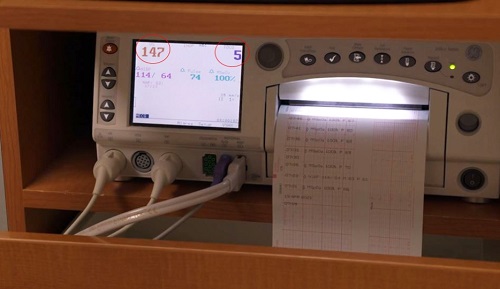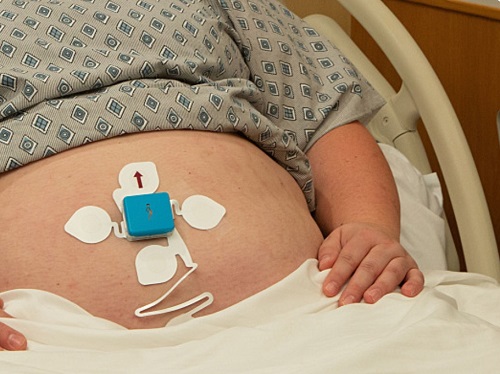Toco refers to a specific feature found in many modern baby monitors that helps parents keep track of their baby’s well-being. Understanding what does toco mean on a baby monitor is essential for parents who want to ensure their little ones are safe and healthy. This technology primarily measures the movements and physiological signals of babies, providing valuable data to caregivers. As new parents navigate the complexities of childcare, tools like toco can significantly enhance their monitoring capabilities. By diving into the meaning and function of toco, parents can make informed decisions about the devices they choose. This article will explore the basics of toco technology, how it works, its benefits, and common misconceptions, ultimately helping you better understand its importance in your baby’s care.

Understanding Toco: The Basics
To grasp what does toco mean on a baby monitor, it’s essential to first explore its foundational aspects.
What is Toco?
Toco, short for “tocodynamometer,” is a technology used in baby monitors to measure uterine contractions and fetal movements. In the context of baby monitors, primarily track the baby’s movements, providing parents with insights into their child’s activity levels. This information can help parents gauge their baby’s health and well-being, making it a crucial feature for any baby monitoring system. Toco technology typically utilizes sensors that pick up on slight movements, translating them into data that can be displayed on the monitor. This way, caregivers can stay informed about their baby’s physical state, ensuring they are aware of any unusual patterns. Knowing what does toco mean on a baby monitor equips parents with the knowledge needed to utilize these devices effectively.
The Importance of Toco on Baby Monitors
Understanding the importance of toco on baby monitors is key for parents who want to keep their infants safe. Toco technology provides real-time data about a baby’s movements, which can be critical for identifying potential health issues early. For instance, a sudden decrease in movement could signal a problem that requires attention. This feature offers peace of mind, allowing parents to monitor their baby’s activity without constant supervision. Additionally, many models equipped with toco can alert parents to unusual patterns, such as excessive movement or stillness, prompting them to take action if needed. Overall, the incorporation of toco technology enhances the monitoring experience, ensuring parents are informed about their baby’s condition at all times. Recognizing what does toco mean on a baby monitor empowers parents to use this tool effectively in their caregiving.
Key Features of Toco Technology
Toco technology boasts several key features that enhance its functionality in baby monitors. One of the primary aspects is its sensitivity, allowing it to detect even the slightest movements. This feature ensures that parents receive accurate and timely information about their baby’s activity levels. Many toco-equipped monitors also come with mobile app integration, enabling parents to access data remotely. This added convenience allows caregivers to check on their baby from anywhere, providing additional peace of mind. Moreover, some models offer customizable alerts, notifying parents if movement patterns fall outside the normal range. These alerts can be particularly helpful during nighttime monitoring, allowing parents to respond quickly to any concerns. Understanding these features clarifies what does toco mean on a baby monitor and highlights the advantages of investing in such technology.

How Toco Works in Baby Monitors
To fully appreciate what does toco mean on a baby monitor, it’s important to delve into the technology and sensors that enable its functionality.
Sensors and Technology Behind Toco
The sensors behind toco technology are sophisticated yet user-friendly. Typically, they consist of pressure-sensitive components that detect the physical movements of the baby. These sensors are designed to pick up on the slightest changes, such as rolling or shifting positions, ensuring that parents receive comprehensive data about their baby’s activity. The data collected by these sensors is then transmitted to the monitor or connected app, where it is analyzed and displayed in an easy-to-understand format. The technology is designed for accuracy and reliability, giving parents confidence in the readings they receive. Understanding how these sensors work clarifies what does toco mean on a baby monitor and underscores its significance in contemporary parenting.
Toco Readings Explained
Toco readings provide crucial insights into a baby’s movements. These readings typically indicate the frequency and intensity of movements detected by the sensors. For instance, a higher reading may suggest increased activity, while a lower reading could indicate a calmer state. Parents can use this information to monitor their baby’s health; unusual movement patterns can signal potential issues that might require further attention. Additionally, many baby monitors provide visual graphs or charts to help parents interpret the data more easily. By understanding these readings, parents can better assess their baby’s well-being and respond accordingly. Recognizing what does toco mean on a baby monitor empowers caregivers to make informed decisions based on accurate movement data.
Interpreting Toco Data for Parents
Interpreting toco data is essential for parents who want to ensure their baby’s health and safety. When reviewing the data, parents should look for trends rather than focusing on isolated readings. Consistent patterns can help caregivers understand their baby’s typical activity level, making it easier to identify when something seems off. For example, if a baby usually has a specific movement frequency and suddenly experiences a significant drop, it could be a cause for concern. Additionally, some baby monitors offer historical data analysis, allowing parents to track changes over time. This capability can be invaluable for identifying long-term trends and potential health issues. By knowing how to interpret toco data, parents can take proactive steps to ensure their baby’s well-being, reinforcing the importance of understanding what does toco mean on a baby monitor.
Benefits of Monitoring Toco Levels
Monitoring toco levels offers several benefits that contribute to a baby’s overall well-being. First and foremost, it provides parents with real-time information about their baby’s movements, allowing for prompt responses to any concerning changes. This proactive approach can be especially crucial during the early months when babies are more vulnerable. Additionally, toco monitoring can enhance a parent’s peace of mind, reducing anxiety about their baby’s health. Knowing that they can easily check on their child’s activity helps caregivers feel more in control. Furthermore, consistent monitoring can aid in establishing routines, as parents can observe patterns in their baby’s movements and behaviors. This information can be used to create a conducive sleeping and feeding schedule. Overall, understanding the benefits of toco levels reinforces the importance of this technology in modern baby monitoring systems.
Common Misconceptions About Toco
Despite its growing popularity, there are several common misconceptions about toco technology that parents should be aware of. One prevalent myth is that toco readings can directly diagnose medical conditions. While toco data provides valuable insights, it is not a substitute for professional medical advice or diagnosis. Parents should always consult healthcare providers for any concerns regarding their baby’s health. Another misconception is that toco monitoring is unnecessary if a baby seems healthy. In reality, continuous monitoring can help identify potential issues before they become serious, making it a beneficial tool for all parents. Lastly, some may believe that toco technology is overly complicated to use. However, most modern baby monitors with toco features are designed for ease of use, ensuring that parents can easily access and understand the data. Clearing up these misconceptions can help parents make informed choices about using toco-equipped baby monitors.
Conclusion
In summary, understanding what does toco mean on a baby monitor is vital for any caregiver. Toco technology provides essential data about a baby’s movements, offering insights that can help ensure their health and safety. By grasping the significance of toco readings, parents can make informed decisions and proactively monitor their baby’s well-being. The ability to interpret this data can empower caregivers to act quickly if they notice unusual patterns. Additionally, debunking common misconceptions surrounding toco technology enhances its perceived value. As parents navigate the complexities of childcare, having reliable monitoring tools is crucial. Toco technology, with its accurate and real-time readings, stands out as an invaluable resource in contemporary parenting.
FAQs:
1.What is the significance of Toco on a baby monitor?
Toco is significant because it provides real-time data about a baby’s movements, helping parents monitor their child’s well-being and identify potential health concerns early.
2.Can Toco readings help in identifying issues with my baby?
Yes, Toco readings can indicate unusual movement patterns, which may signal health issues. If parents notice a sudden change in their baby’s activity levels, they should consult a healthcare professional for further evaluation.
3.How accurate are Toco sensors in baby monitors?
Toco sensors are designed for high sensitivity and accuracy, capable of detecting even slight movements. While they provide reliable data, parents should always use them as a complement to regular check-ups and medical advice.
